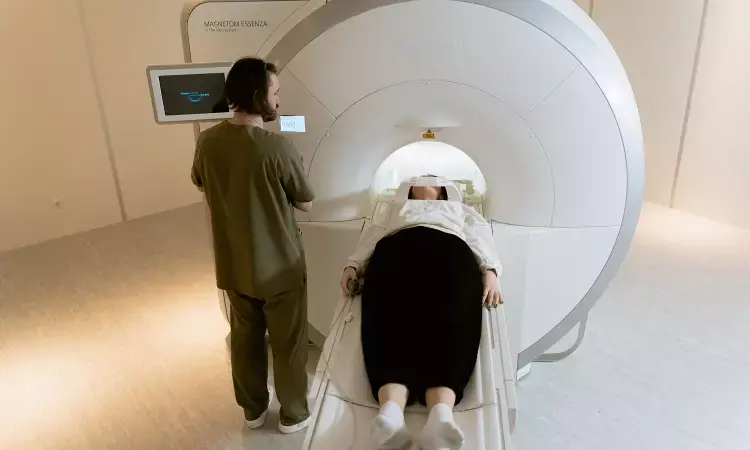- Home
- Medical news & Guidelines
- Anesthesiology
- Cardiology and CTVS
- Critical Care
- Dentistry
- Dermatology
- Diabetes and Endocrinology
- ENT
- Gastroenterology
- Medicine
- Nephrology
- Neurology
- Obstretics-Gynaecology
- Oncology
- Ophthalmology
- Orthopaedics
- Pediatrics-Neonatology
- Psychiatry
- Pulmonology
- Radiology
- Surgery
- Urology
- Laboratory Medicine
- Diet
- Nursing
- Paramedical
- Physiotherapy
- Health news
- Fact Check
- Bone Health Fact Check
- Brain Health Fact Check
- Cancer Related Fact Check
- Child Care Fact Check
- Dental and oral health fact check
- Diabetes and metabolic health fact check
- Diet and Nutrition Fact Check
- Eye and ENT Care Fact Check
- Fitness fact check
- Gut health fact check
- Heart health fact check
- Kidney health fact check
- Medical education fact check
- Men's health fact check
- Respiratory fact check
- Skin and hair care fact check
- Vaccine and Immunization fact check
- Women's health fact check
- AYUSH
- State News
- Andaman and Nicobar Islands
- Andhra Pradesh
- Arunachal Pradesh
- Assam
- Bihar
- Chandigarh
- Chattisgarh
- Dadra and Nagar Haveli
- Daman and Diu
- Delhi
- Goa
- Gujarat
- Haryana
- Himachal Pradesh
- Jammu & Kashmir
- Jharkhand
- Karnataka
- Kerala
- Ladakh
- Lakshadweep
- Madhya Pradesh
- Maharashtra
- Manipur
- Meghalaya
- Mizoram
- Nagaland
- Odisha
- Puducherry
- Punjab
- Rajasthan
- Sikkim
- Tamil Nadu
- Telangana
- Tripura
- Uttar Pradesh
- Uttrakhand
- West Bengal
- Medical Education
- Industry
Machine Learning Model Accurately Predicts Interstitial Lung Abnormalities on CT Scans, claims study

Researchers have found that machine learning models can correctly predict the probability of interstitial lung abnormalities (ILAs) from computed tomography scans, a breakthrough that could help in devising early detection and treatment strategies for lung diseases. Despite the clinical importance of ILAs, there has been a difficulty in their automated identification. This study was a development and performance test of machine learning models in predicting the probabilities of ILA based on CT images from a large dataset provided by the Boston Lung Cancer Study. The study was recently published in the journal Radiology by Akinori H. and colleagues.
Interstitial lung abnormalities, often incidentally found in computed tomography scans, emerge due to their significant clinical implications, including a relation to higher susceptibility for pulmonary fibrosis and other diseases affecting the lungs. However, fully automated detection of ILAs has not yet been realized, and therefore the development of reliable predictive models becomes necessary. Presently, this study was a key attempt at devising and evaluating machine learning models that could predict the probability of the occurrence of ILAs in CT scans for assisting diagnosis in a clinical setting with efficiency.
It includes 1,382 CTs of the Boston Lung Cancer Study, collected from February 2004 to June 2017. The cohort consisted of cases with an average patient age of 67 years and 759 females. Two radiologists and one pulmonologist visually assessed the truth about the presence of ILAs. The proposed system is based on a stepwise methodology in the development of automated ILA probability prediction models.
The two key components of this system were; the model generated an ILA probability for each section of the CT scan and the case inference model combined probabilities from the section inference model to output a case-level ILA probability. This study tested the machine learning classifiers on SVM, RF, and CNN. These undetermined sections and cases were assessed by both two- and three-label methods. Receiver operating characteristic analysis was used to assess the performance of the model. The AUC of the ROC-the accuracy metric of this model-is depicted below.
• Among the 1,382 CT scans evaluated:
• Of these, 8% or 104 scans were labeled to contain ILAs.
• 36% or 492 scans were labeled as indeterminate for the presence of ILAs.
• 57%, or 786 scans, were labeled without evidence of ILAs.
• Datasets Training data 96 scans; 48 with ILA
• Validation set: 24 scans; 12 with ILA
• Testing data 1,262 scans; 44 with ILA
• Among the evaluated models, the section inference model with a three-label method combined with the case inference model with an RF classifier using the two-label method reached the highest AUC of 0.87.
• The result shows substantial performance in predicting the probability of ILAs from CT scans, therefore suggesting that this model can be highly useful in a clinical setting.
These findings suggest that machine learning may be useful for automated ILA detection, which would be very important for the early diagnosis and management of lung diseases. The high AUC generated by the model further underlines its accuracy and reliability; it therefore will be worth employing in routine clinical practice. This should hopefully translate into the capability for timely interventions hence improving the outcomes of patients who are at risk of developing more serious lung conditions.
Reference:
Dr Riya Dave has completed dentistry from Gujarat University in 2022. She is a dentist and accomplished medical and scientific writer known for her commitment to bridging the gap between clinical expertise and accessible healthcare information. She has been actively involved in writing blogs related to health and wellness.
Dr Kamal Kant Kohli-MBBS, DTCD- a chest specialist with more than 30 years of practice and a flair for writing clinical articles, Dr Kamal Kant Kohli joined Medical Dialogues as a Chief Editor of Medical News. Besides writing articles, as an editor, he proofreads and verifies all the medical content published on Medical Dialogues including those coming from journals, studies,medical conferences,guidelines etc. Email: drkohli@medicaldialogues.in. Contact no. 011-43720751


